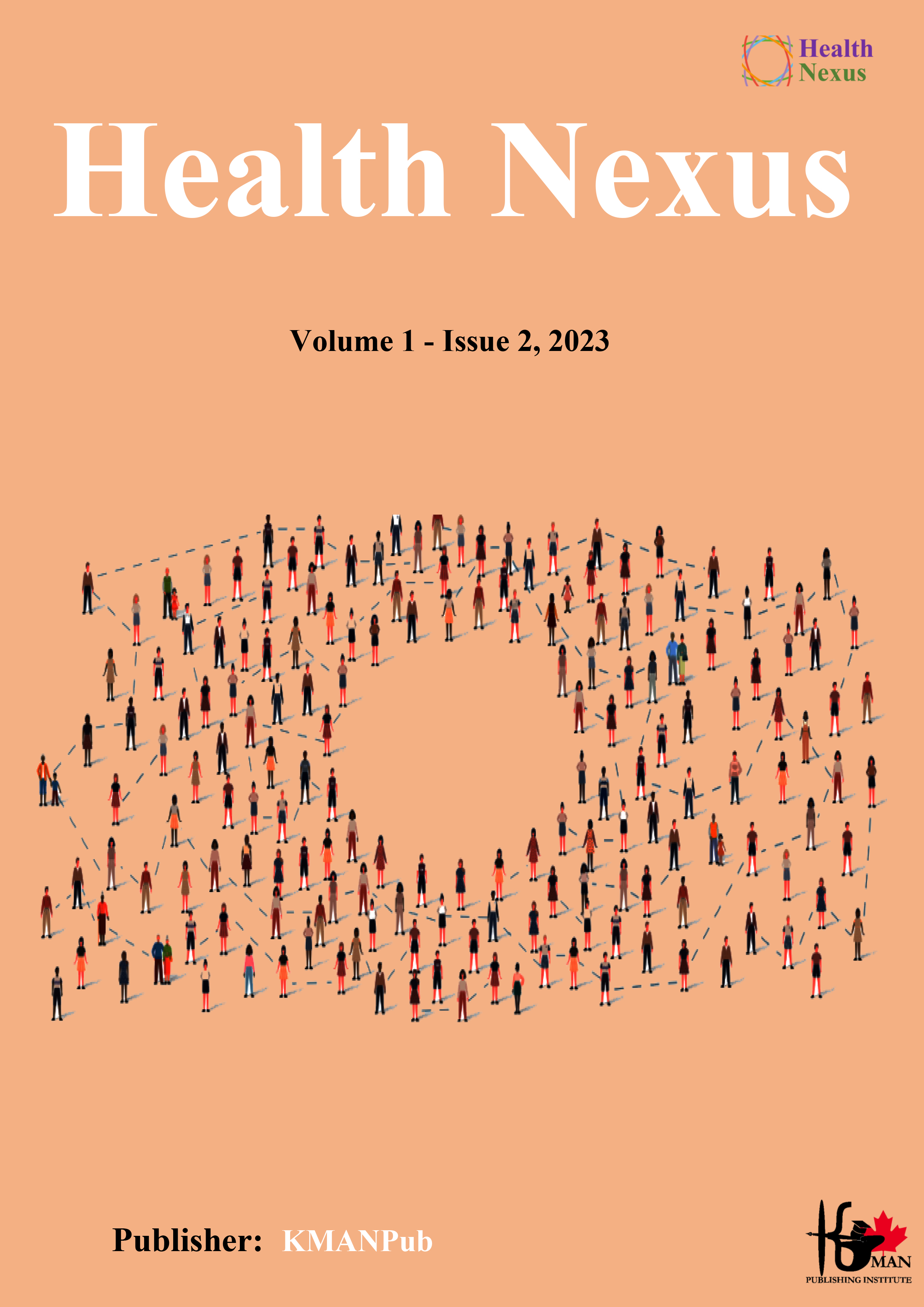Prescribing Patterns of Antibiotics Among The Pediatric Patients Attended The Outpatient Departments of The Tertiary Level Hospitals in Nigeria: A Cross-Sectional Study
Keywords:
Antibiotic, Prescription, Pattern, UDTHS, GHKSAbstract
Rationality analysis of the prescribing pattern of antibiotics for pediatric patients can help to point towards irrationality and can make a consensus among physicians for rational prescribing. This study was aimed at identifying the antibiotic prescription survey in pediatric outpatient prescriptions. This study was carried out in two hospitals namely; Usmanu Danfodiyo University Teaching Hospital, Sokoto, and General Hospital Katsina Nigeria during the period of October to December 2019. A total of 600 prescriptions cumulatively were used as a sample and were selected using the convenience sampling technique. For data collection, a self-designed data collection sheet was used. WHO / INRUD prescribing indicators were used for the analysis of prescription patterns. A total of 600 prescriptions (364 from UDUTHS and 236 from GHKS) were selected and used for the study. Most of the patients admitted to the two selected hospitals were male. The patient’s ages varied from a few months to 12 years, with the majority aged 4 years or less (61.0%) of age. From the 600 prescriptions evaluated, 1564 drugs (912 from UDUTHS and 652 GHKS) were prescribed. The average number of drugs per encounter in UDUTHS and GHKS were 3.0±0.4 and 3.2±0.7 respectively. The percentages of encounters with an antibiotic prescribed in both hospitals were similar: 32.1% for UDUTHS and 31.1% for GHKS. Most antibiotics were targeted at respiratory tract infections Roxithromycin 126 (21.0%) was the most frequently prescribed antibiotic and was prescribed by the proprietary name. This study has revealed inappropriate drug prescriptions in the pediatric outpatient in these hospitals. These include the low rate of prescriptions in generic names; extensive polypharmacy; and inappropriate prescription of antibiotics which could lead to drug-drug interaction and adverse drug reaction is also evident in these hospitals.
Downloads
References
1. Park S-H. Is Antibiotic resistance microorganism becoming a significant problem in acute cholangitis in Korea? Clinical Endoscopy. 2012;45(2):111-2. [PMID: 22866247] [PMCID: PMC3401610] [DOI]
2. Sengupta S, Chattopadhyay MK, Grossart H-P. The multifaceted roles of antibiotics and antibiotic resistance in nature. Frontiers in microbiology. 2013;4:47. [PMID: 23487476] [PMCID: PMC3594987] [DOI]
3. Mandal P, Asad M, Kayal A, Biswas M. Assessment of use of World Health Organization access, watch, reserve antibiotics and core prescribing indicators in pediatric outpatients in a tertiary care teaching hospital in Eastern India. Perspectives in Clinical Research. 2023;14(2):61. [PMID: 37325582] [PMCID: PMC10267998] [DOI]
4. Chima IE, Obidiya CV, Olatunji S. Evaluation of Drug Use and Patient Care Practices in a Referral Health Facility in Yenagoa; Bayelsa State; Nigeria. cont j pharm Sci. 2012:10-6. [DOI]
5. Oshikoya K, Ojo O. Medication errors in paediatric outpatient prescriptions of a teaching hospital in Nigeria. Nigerian quarterly journal of hospital medicine. 2007;17(2):74-8. [PMID: 18318097] [DOI]
6. Oghuvwu S, Isah A. Prescription Patterns and Patient Care Practices in Two Tertiary Hospitals in South-South Nigeria. West African Journal of Medicine. 2023;40(1):78-83. [PMID: 33732121] [PMCID: PMC7958764] [DOI]
7. Asmaa Y, Kakalia S, Irtza M, Malik R, Jamshaid M, Farrukh H. Antibiotic Use for Febrile Children in a Tertiary Care Hospital's Outpatient Department: A Cross-Sectional Study. Cureus. 2023;15(6):e40356. [PMID: 37456455] [PMCID: PMC10339664] [DOI]
8. Velo GP, Minuz P. Medication errors: prescribing faults and prescription errors. British journal of clinical pharmacology. 2009;67(6):624-8. [PMID: 19594530] [PMCID: PMC2723200] [DOI]
9. Olayemi S, Akinyede A, Oreagba A. Prescription pattern at primary health care centres in Lagos State. The Nigerian postgraduate medical journal. 2006;13(3):220-4. [PMID: 17066110] [DOI]
10. Rambhade S, Chakarborty A, Shrivastava A, Patil UK, Rambhade A. A survey on polypharmacy and use of inappropriate medications. Toxicology international. 2012;19(1):68. [PMID: 22736907] [PMCID: PMC3339249] [DOI]
11. Organization WH. How to investigate drug use in health facilities: selected drug use indicators. World Health Organization; 1993.
12. Balasubramaniam S, Melanie M, Fitzpatrick E, Hurley K, Black E, editors. Prescribing and Dispensing Delayed Antibiotics to Pediatric Patients with Acute Otitis Media and Pharyngitis. Open Forum Infectious Diseases; 2023: Oxford University Press US. [PMCID: PMC10677930] [DOI]
13. Thiruthopu NS, Mateti UV, Bairi R, Sivva D, Martha S. Drug utilization pattern in South Indian pediatric population: A prospective study. Perspectives in Clinical research. 2014;5(4):178. [PMID: 25276628] [PMCID: PMC4170536] [DOI]
14. Sanguineti GG, Villavicencio KH, Calderon R, Laufer M, editors. Analysis of Staphylococcus aureus resistance patterns and antibiotic prescribing practices in a single tertiary pediatric center in South Florida. Open Forum Infectious Diseases; 2022: Oxford University Press US. [DOI]
15. Loong LS, Lai PSM, Jamaluddin NAH, Naina-Mohamed I, Periyasamy P, Lau CL, et al. Comparing the appropriateness of antimicrobial prescribing among medical patients in two tertiary hospitals in Malaysia. The Journal of Infection in Developing Countries. 2022;16(12):1877-86. [PMID: 36753656] [DOI]
16. Akhtar M, Vohora D, Pillai K, Dubey K, Roy M, Najmi A, Khanam R. Drug prescribing practices in paediatric department of a north indian university teaching hospital. Asian J Pharm Clin Res. 2012;5(1):146-9.
17. Lindell‐Osuagwu L, Korhonen M, Saano S, Helin‐Tanninen M, Naaranlahti T, Kokki H. Off‐label and unlicensed drug prescribing in three paediatric wards in Finland and review of the international literature. Journal of clinical pharmacy and therapeutics. 2009;34(3):277-87. [PMID: 19650250] [DOI]
18. Feudtner C, Dai D, Hexem KR, Luan X, Metjian TA. Prevalence of polypharmacy exposure among hospitalized children in the United States. Archives of pediatrics & adolescent medicine. 2012;166(1):9-16. [PMID: 21893637] [DOI]
19. Najmi M, Hafiz R, Khan I, Fazli F. Prescribing practices: an overview of three teaching hospitals in Pakistan. JPMA The Journal of the Pakistan Medical Association. 1998;48(3):73-7.
20. Akinyede A, Mabadeje A, Aliu M. A Comparative study of patterns of prescription ofAntibiotics in Two Health Centres in Lagos. Journal of the Nigerian Infection Control Association. 2000;3(1):20-3.
21. Hersh AL, Jackson MA, Hicks LA, Diseases CoI, Brady MT, Byington CL, et al. Principles of judicious antibiotic prescribing for upper respiratory tract infections in pediatrics. Pediatrics. 2013;132(6):1146-54. [PMID: 24249823] [DOI]
22. Aagaard L, Hansen EH. Prescribing of medicines in the Danish paediatric population outwith the licensed age group: characteristics of adverse drug reactions. British journal of clinical pharmacology. 2011;71(5):751-7. [PMID: 21241353] [PMCID: PMC3093080] [DOI]
23. Meremikwu M, Okomo U, Nwachukwu C, Oyo-Ita A, Eke-Njoku J, Okebe J, et al. Antimalarial drug prescribing practice in private and public health facilities in South-east Nigeria: a descriptive study. Malaria journal. 2007;6(1):1-4. [PMID: 17480216] [PMCID: PMC1867820] [DOI]
24. Eze UI, Eferakeya AE, Oparah AC, Enato EF. Assessment of prescription profile of pregnant women visiting antenatal clinics. Pharmacy Practice (Internet). 2007;5(3):135-9. [PMID: 25214930] [PMCID: PMC4154748] [DOI]
25. Adibe M, Aguwa C, Ukwe C, Okonta J, Udeogaranya P. Outpatient utilization of anti-diabetic drugs in the South Eastern Nigeria. 2009.
Downloads
Additional Files
Published
License
Copyright (c) 2023 Uwais Aminu, Abdullahi Ishaq, Shahrukh Rummana (Author); Abul Hasan BakiBillah (Corresponding Author)

This work is licensed under a Creative Commons Attribution-NonCommercial 4.0 International License.
















